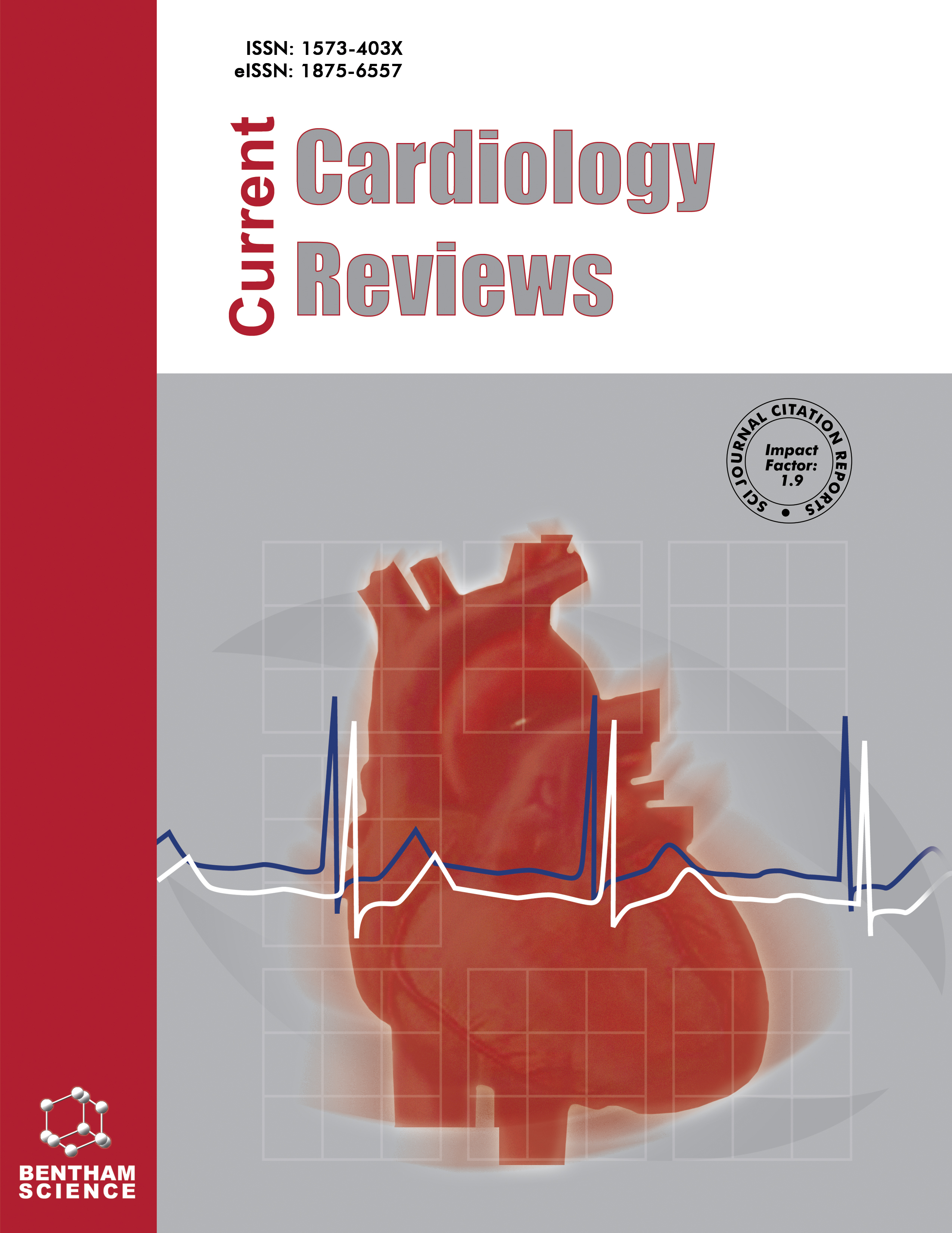- Home
- A-Z Publications
- Current Cardiology Reviews
- Previous Issues
- Volume 14, Issue 4, 2018
Current Cardiology Reviews - Volume 14, Issue 4, 2018
Volume 14, Issue 4, 2018
-
-
Arterial Aging, Metalloproteinase Regulation, and the Potential of Resistance Exercise
More LessBy Allan KnoxBackground: Aging is a process that affects all living organisms. The transition through life elicits tissue specific alterations in the functional and structural capabilities of all physiological systems. In particular, the vasculature is vulnerable to aging specific adaptations which induces morphological changes and ultimately increases the risk of pathological states. Matrix metalloproteinases are a group of extremely activ Read More
-
-
-
Endothelial Regenerative Capacity and Aging: Influence of Diet, Exercise and Obesity
More LessBy Mark D. RossBackground: The endothelium plays an important role in cardiovascular regulation, from blood flow to platelet aggregation, immune cell infiltration and demargination. A dysfunctional endothelium leads to the onset and progression of Cardiovascular Disease (CVD). The aging endothelium displays significant alterations in function, such as reduced vasomotor functions and reduced angiogenic capabilities. This could be partl Read More
-
-
-
Cardiac Response to Exercise in Normal Ageing: What Can We Learn from Masters Athletes?
More LessAuthors: A. Beaumont, A. Campbell, F. Grace and N. SculthorpeBackground: Ageing is associated with an inexorable decline in cardiac and vascular function, resulting in an increased risk of Cardiovascular Disease (CVD). Lifestyle factors such as exercise have emerged as a primary therapeutic target in the prevention of CVD, yet older individuals are frequently reported as being the least active, with few meeting the recommended physical activity guidelines. In contrast, well trained ol Read More
-
-
-
Similarities and Differences Between Carotid Artery and Coronary Artery Function
More LessAuthors: Arron Peace, Anke Van Mil, Helen Jones and Dick H.J. ThijssenBackground: Cardiovascular Disease (CVD) remains one of the leading causes of morbidity and mortality. Strategies to predict development of CVD are therefore key in preventing and managing CVD. One stratergy in predicting CVD is by examining the role of traditional risk factors for CVD (e.g. age, sex, weight, blood pressure, blood lipids, blood glucose, smoking and physical activity). Although these measures are non-invasive a Read More
-
-
-
Cellular Mechanisms of Valvular Thickening in Early and Intermediate Calcific Aortic Valve Disease
More LessAuthors: Pauli Ohukainen, Heikki Ruskoaho and Jaana RysaBackground: Calcific aortic valve disease is common in an aging population. It is an active atheroinflammatory process that has an initial pathophysiology and similar risk factors as atherosclerosis. However, the ultimate disease phenotypes are markedly different. While coronary heart disease results in rupture-prone plaques, calcific aortic valve disease leads to heavily calcified and ossified valves. Both are initiated by t Read More
-
-
-
The Protective Role of Crocus Sativus L. (Saffron) Against Ischemia-Reperfusion Injury, Hyperlipidemia and Atherosclerosis: Nature Opposing Cardiovascular Diseases
More LessAuthors: Kyriaki Hatziagapiou and George I. LambrouBackground: Reactive oxygen species and reactive nitrogen species, which are collectively called reactive oxygen-nitrogen species, are inevitable by-products of cellular metabolic redox reactions, such as oxidative phosphorylation in the mitochondrial respiratory chain, phagocytosis, reactions of biotransformation of exogenous and endogenous substrate in endoplasmic reticulum, eicosanoid synthesis, and redox reactions in th Read More
-
-
-
Reactive Oxygen Species as Intracellular Signaling Molecules in the Cardiovascular System
More LessBackground: Redox signaling plays an important role in the lives of cells. This signaling not only becomes apparent in pathologies but is also thought to be involved in maintaining physiological homeostasis. Reactive Oxygen Species (ROS) can activate protein kinases: CaMKII, PKG, PKA, ERK, PI3K, Akt, PKC, PDK, JNK, p38. It is unclear whether it is a direct interaction of ROS with these kinases or whether their activation is a consequ Read More
-
Volumes & issues
-
Volume 21 (2025)
-
Volume 20 (2024)
-
Volume 19 (2023)
-
Volume 18 (2022)
-
Volume 17 (2021)
-
Volume 16 (2020)
-
Volume 15 (2019)
-
Volume 14 (2018)
-
Volume 13 (2017)
-
Volume 12 (2016)
-
Volume 11 (2015)
-
Volume 10 (2014)
-
Volume 9 (2013)
-
Volume 8 (2012)
-
Volume 7 (2011)
-
Volume 6 (2010)
-
Volume 5 (2009)
-
Volume 4 (2008)
-
Volume 3 (2007)
-
Volume 2 (2006)
-
Volume 1 (2005)
Most Read This Month
Article
content/journals/ccr
Journal
10
5
false
en


